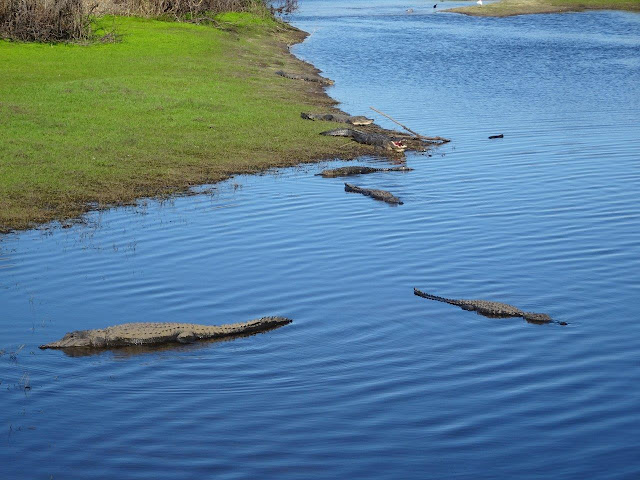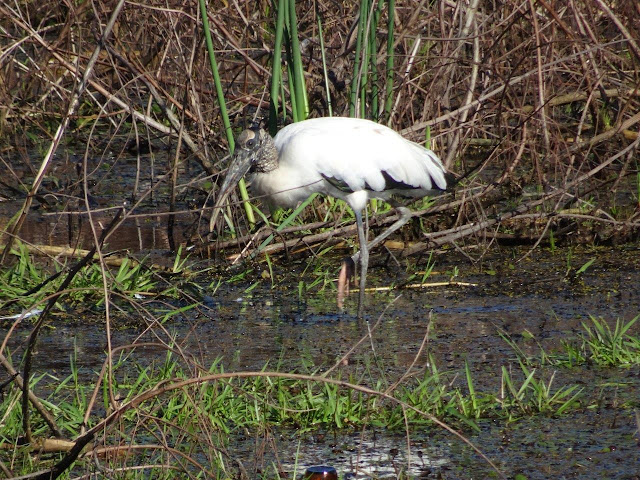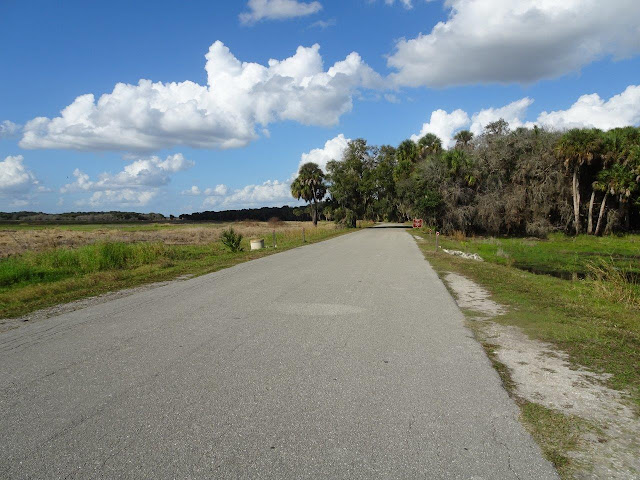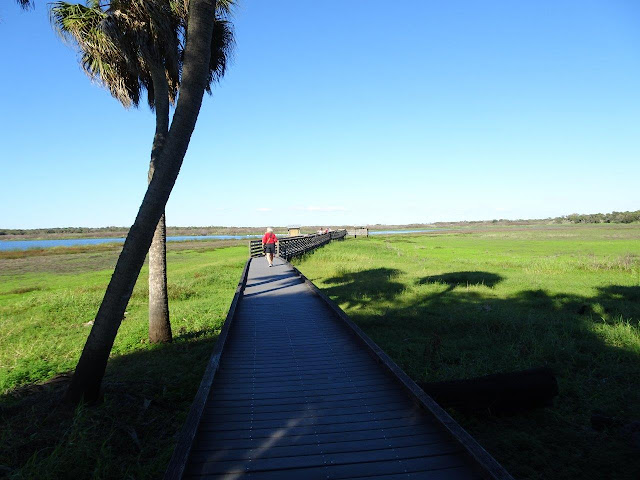This is one of my favorite state parks in Florida. Not only is it huge, but it has a ton of birds and alligators and lots of ways to see them. It also has three campgrounds, with the newest having full hookups and lots of privacy between sites. It is also a great campground for bike riding, since there is a very long road to the lake from this full hookup campground, but it also has a paved road that takes you to the other end of the park and a "bird walk."
As I was preparing photos for this posting, I realized I missed taking some photos of some things, so I will fill in the blanks tomorrow as I take a long bike ride. But in any case, here is my campsite. I will take more photos tomorrow to show you more campsites.
There are also some really big pull-through sites in this campground:
And a nice restroom building with a washer and dryer.
One of the best way to see birds and alligators is to stop at the bridge across the Myakka River on your way to the lake and the store.
A clue to good places to stop is to watch where everyone else is stopping and looking!
A lurking alligator near the bridge. A good time to see alligators when they are out of the water is a warm, sunny day after a cold night. A cold night makes them have to climb out on the bank to warm up in the sun. I liked the way the sun played on the water in this photo.
On Christmas Day, the two nights previously had been cold, but this day was warm, so there were a lot of alligators at the bridge area sunning themselves.
This is the main roadway that goes through the park.
This is a closeup of one of the branches on the tree above. The dried up stuff is what is called resurrection fern. This photo was taken before it rained the other day, so it is dried up and curled up. After it rains, it perks up, turns green, and looks alive again, although of course it was alive when it looked dead previously.
These are sandhill cranes.
And a wood stork.
On the left is wetland prairie. The fact that this state park is so large and such a variety of types of environment makes it a good place for birds and other animals. There are deer and wild hogs living in the dryer parts of the state park.
This is where one part of the road ends at the big, shallow lake.
This photo was taken a couple of miles away at the bird walk, but you can see how many black vultures hang around this area.
This is a closeup of a black vulture across from the state park store. The pink bird is a roseate spoonbill with his spoonbill tucked around on his back. Do not worry. The vulture will not bother him or her. In fact, black vultures are very social birds and hang out with a lot of other Florida birds. You can tell this is a black vulture, not a turkey vulture, because his head and neck are entirely black.
This is only a small portion of the sky above the lake. Multiple it by about 10, and you can guess how many black vultures were flying around.
Some white pelicans. These are huge birds, much bigger than the typical brown pelicans common in florida.
A great white heron and some other birds I can't identify.
A flock of white ibis--yellow beaks, yellow legs, and curved-down beaks.
This is what they call the "Bird Walk." It is a boardwalk for watching birds.
And a sign showing the birds of Myakka River. I like Florida birds because they tend to be big and easily identified.
There is a viewing platform down at the end.
Christmas Day was a great day for a bike walk and to take photos to add to my blog posting!







































No comments:
Post a Comment